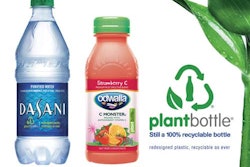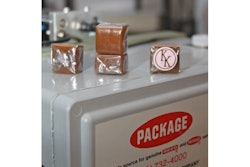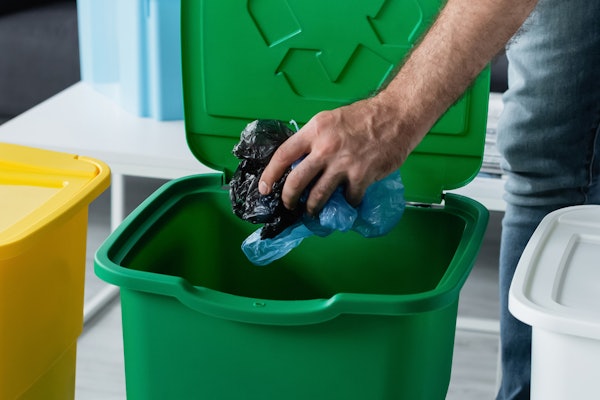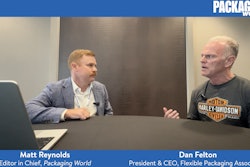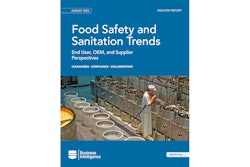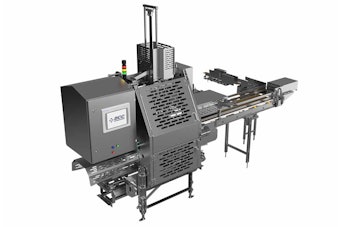
Chet Rutledge, director of packaging for private brands for Walmart Stores Inc., recently participated in a Packaging World webinar that presented Walmart’s views on Retail-Ready Packaging, or RRP as it’s come to be called. Speaking exclusively with Ben Miyares, president of the Packaging Management Institute, Rutledge outlined some of the achievements made—and some of the challenges still faced—as Walmart works to realize the business benefits of RRP. Here is a portion of that webinar conversation.
Packaging World:
How does Walmart define retail-ready packaging, and what is the business justification for implementing RRP?
Rutledge:
RRP is packaging that’s fit for purpose throughout the supply chain. That means it must be in keeping with the five easies. Is it easy to open? Is it easy to identify? Is it easy to shop? Easy to stock? Easy disposal? Those are the core elements that have been defined through the IGD network in the UK. We have today a lot of products that I would call essentially “shelf-ready,” but in our terms, we refer to that and most of our suppliers will refer to that as a PDQ. So what’s the difference between this and the PDQ? Well PDQ is something I could get into fairly easy but it may be today just a perforated box with a knock-out panel. Graphics may not even be in the picture. True RRP, on the other hand, takes graphics into account, harmonizing graphics at that. I’ve seen some really good work where the transport secondary packaging actually ends up on shelf. The graphics marry up with the primary package for a really nice look and presentation on the shelf. It’s much more than just a brown box. Is it easy to stock products? Think about products that are high-volume items, small items that you end up stocking one at a time on the shelf. If you can stock multiple of those items in one motion versus a dozen separate motions, there’s speed and efficiency gained in stocking practices. Key icons are also part of true RRP, a graphic look that makes it easy to find it in the back room. If you’ve got product that’s in the back room and storage that’s two or three bays high and somebody’s looking for that, it makes it very difficult when it’s a sea of the same look, the same item. It’s really just looking at it as a whole delivery system that goes throughout the whole process and making it easier for an associate to find, locate, and put the product on the shelf, while also helping the customer find it, recognize it, and purchase it.
Does Walmart have a general grocery retail position on RRP in the United States?
We don’t have a formal publicly stated position at this point for the U.S. We do have in Canada. Walmart Canada and the Loblaws chain are going forward with RRP because they’re in alignment with the trade associations there in Canada. In the United States, we’re not as aligned. I know that other retailers are looking at it as part of their business strategy. But I don’t think there’s a uniform approach, which has been a key to success in my opinion with making RRP succeed in Europe, especially the UK. There was industry alignment. We obviously have a lot more variables in the U.S. just due to size and due to complexity of the supply chain and distance the product has to travel. But some industry alignment would be helpful. I look at it as three major product groups. In Group 1 are packages that are fairly easy to change over. There may even be some existing items that are in some form of shelf-ready package already. If it’s some minor modifications to that current package, that’s relatively insignificant. I can make that change with no cost impacts, because it’s relatively easy. In Group 2 things get progressively harder. Does it require capital? Does it require machinery modifications? And then in Group 3 you’re looking at new equipment and evaluating a whole new process. I think you can find value in every one of them. So I’m encouraging suppliers that I work with by telling them that anything currently in some form of shelf-ready package or anything that they can change today to meet the retail-ready guidelines with no impact, no cost impact, by all means go ahead and do that. Then the other side of the coin is for new items coming in. You’re going to have to develop packaging anyway, so let’s go ahead and put RRP into the thought process for those new items coming in. I see it more as an evolutionary process. It’s not going to happen overnight. It’s going to be much more of an evolutionary process.
It’s a lot easier to think about it at the outset than to try to look at your existing RSC and say alright, how can I convert that to RRP? Is Wal-Mart envisioning RRP for principally the grocery end of the business, or do you extend this to non-grocery items as well?
It has a potential to play in all categories. The area that I’m focused on is more groceries. Groceries and the consumable segment of the business, that’s what I’m responsible for. But think about socks and those types of garments that often are peg-hooked today. I’ve seen some side-by-side video comparisons of peg-hooking and RRP, and there’s a lot of time, labor, and shelf space wasted by peg hooking. So there’s definitely opportunities for RRP in categories like that. Seasonal items, too.
I would think that one principal area of difference between Europe and North America would be the distances that products must travel from point of manufacture to point of sale. Is there any possibility of adding a sixth easy, Distribution, for the US, or is that already incorporated in the five?
Fundamentally, I think it would be inherent in the five, but you’re right, our distribution legs are much longer versus any of the distribution legs in Europe. So that must be paid a little more attention here in North America. You could even go further back and get into the manufacturing piece of it. Is it efficient, and is it easy to manufacture? Is it easy to assemble it at pack-out point or the point of initial manufacture? These are really key areas that we have to take into consideration as well.



